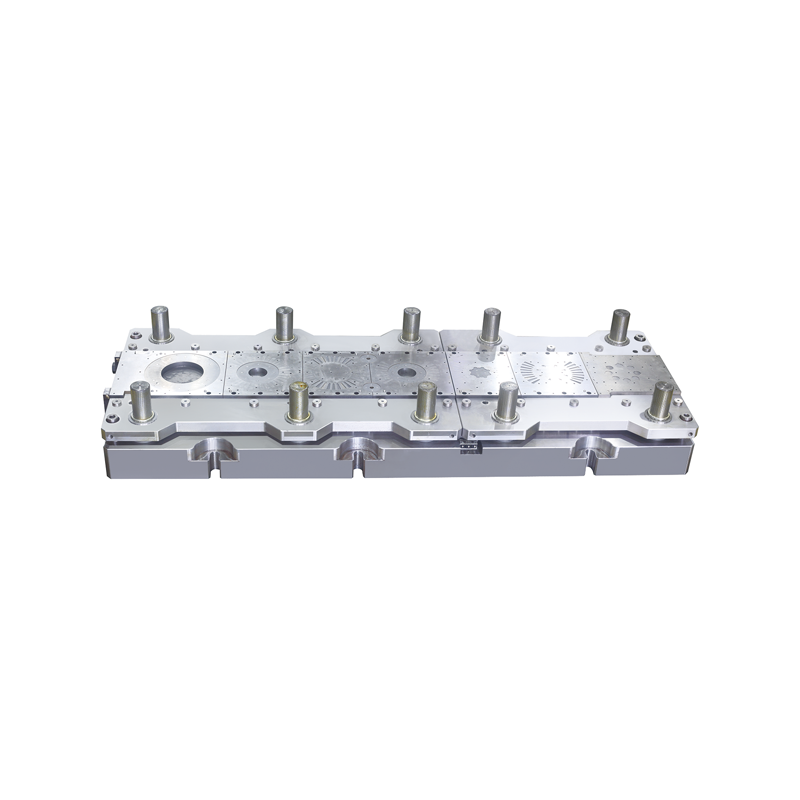 2025.07.25
2025.07.25
 Industry News
Industry News
In the highly competitive manufacturing landscape, precision stamping molds have emerged as a cornerstone for industries that rely on high-quality, intricately designed components. From automotive parts to electronics, the choice of the right precision stamping mold can make or break the production process. This article delves into the essential factors to consider when selecting a precision stamping mold that aligns perfectly with your production needs.
First and foremost, understanding the specific requirements of your production is crucial. Precision stamping molds are designed to achieve high levels of accuracy and repeatability, but they must be tailored to the unique specifications of the components you aim to produce. Whether you are manufacturing small, complex parts or larger, simpler components, the precision stamping mold must be capable of delivering the desired dimensions and tolerances. For example, in the automotive industry, precision stamping molds are used to create engine components that require extremely tight tolerances to ensure performance and safety. In such cases, the mold must be designed with precision tooling and high-grade materials to withstand the rigors of high-volume production.
Material selection plays a vital role in choosing the right precision stamping mold. The mold material must be compatible with the material of the workpiece to ensure smooth and efficient stamping operations. Common materials used for precision stamping molds include tool steel, carbide, and even some advanced composites. Tool steel is known for its strength and durability, making it suitable for a wide range of applications. However, carbide molds offer even higher precision and wear resistance, which can be beneficial for producing intricate and high-precision parts. When selecting the material for your precision stamping mold, it is important to consider factors such as the hardness of the workpiece material, the expected production volume, and the desired lifespan of the mold.

The complexity of the part design also significantly impacts the choice of the precision stamping mold. More complex parts may require multi-cavity molds or progressive die molds to achieve the desired level of detail and functionality. Progressive die molds, for instance, are designed to perform multiple operations in a single press stroke, allowing for the production of complex parts with high efficiency. These molds consist of a series of stations, each performing a specific operation such as cutting, bending, or forming. By carefully analyzing the part design and identifying the critical features, manufacturers can select the appropriate type of precision stamping mold to ensure that the production process is both efficient and cost-effective.
Another important consideration is the production volume. Precision stamping molds can be designed for low-volume prototyping or high-volume mass production. For low-volume production, quick-change molds or flexible tooling systems may be more suitable, as they allow for easy adjustments and modifications. These molds can be quickly reconfigured to accommodate design changes or to switch between different part designs. On the other hand, for high-volume production, rigid and durable molds are essential to ensure consistent quality and long-term reliability. High-volume precision stamping molds are typically made from high-grade materials and are designed with advanced cooling systems to prevent thermal deformation and maintain dimensional accuracy throughout the production run.
The precision stamping mold's surface finish is another critical factor to consider. A smooth and polished mold surface can significantly improve the quality of the stamped parts by reducing surface defects and ensuring a clean, uniform finish. This is particularly important for parts that require a high level of surface quality, such as those used in the electronics or aerospace industries. Additionally, the surface finish of the mold can also affect the ejection process, as a rough surface may cause the parts to stick to the mold, to production delays and defects. Therefore, investing in a precision stamping mold with a high-quality surface finish can result in better part quality and more efficient production.
The choice of the precision stamping mold manufacturer is equally important. A reputable and experienced mold maker will have the expertise and technology to design and produce molds that meet the standards of precision and quality. When selecting a mold manufacturer, it is essential to evaluate their track record, customer reviews, and the range of services they offer. A good mold maker will work closely with you to understand your production requirements and provide customized solutions that meet your specific needs. They will also offer after-sales support, including mold maintenance and repair services, to ensure that your precision stamping mold remains in condition throughout its lifespan.
In conclusion, selecting the right precision stamping mold is a multifaceted decision that requires careful consideration of various factors, including production requirements, material compatibility, part complexity, production volume, surface finish, and the reputation of the mold manufacturer. By taking the time to evaluate these factors and working closely with a trusted mold maker, manufacturers can ensure that their precision stamping mold will deliver the desired level of quality, efficiency, and reliability. In today's fast-paced and competitive manufacturing environment, the right precision stamping mold can be the key to unlocking new levels of productivity and success.